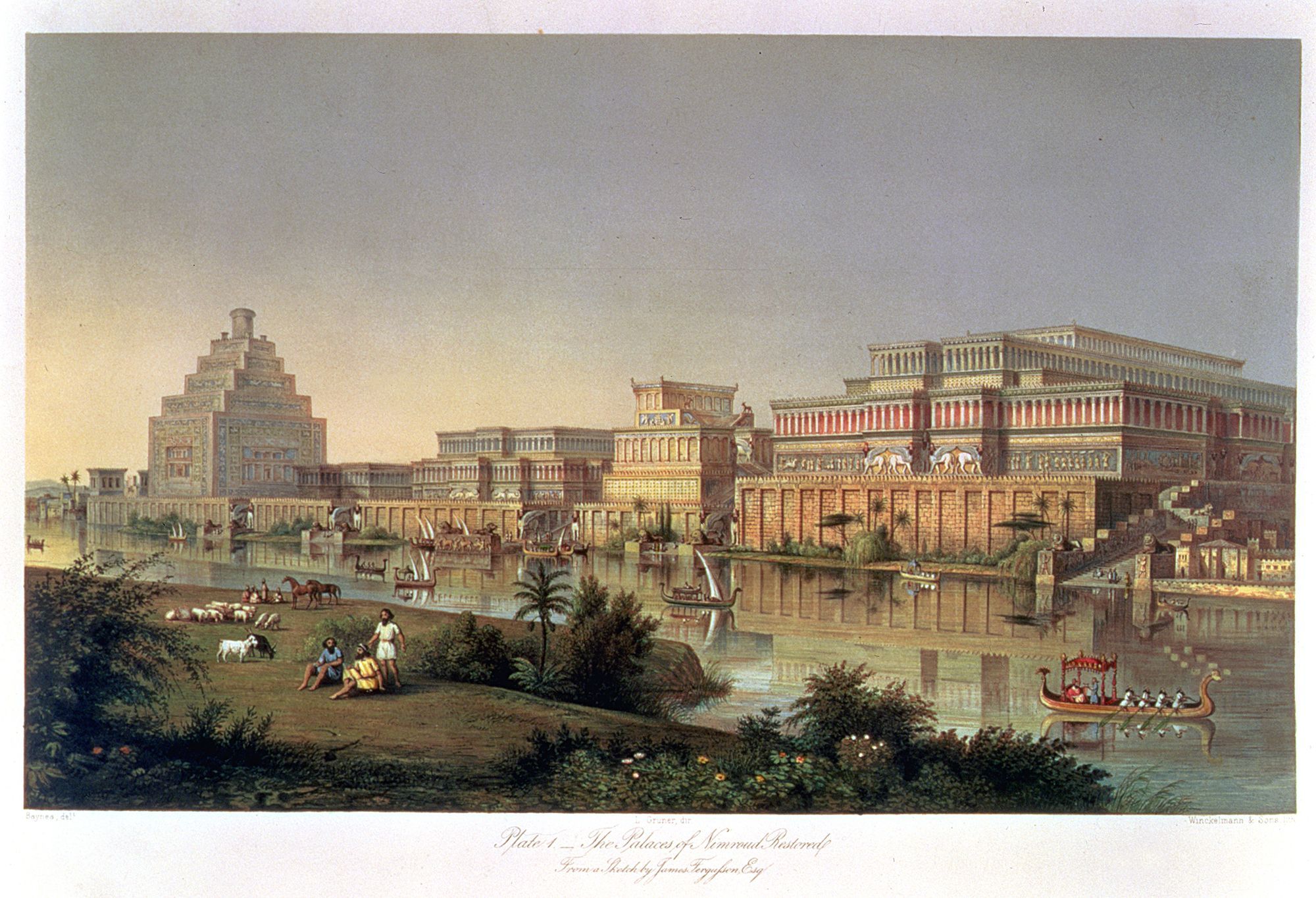The Assyrians, via Wikipedia
“Assyria (Neo-Assyrian cuneiform: , māt Aššur) was a major ancient Mesopotamian civilization. It existed as a city-state from the 21st century BC to the 14th century BC. Eventually it expanded into an empire from the 14th century BC to the 7th century BC.[4]
Spanning from the early Bronze Age to the late Iron Age, modern historians typically divide ancient Assyrian history into the following: Early Assyrian (c. 2600–2025 BC), Old Assyrian (c. 2025–1364 BC), Middle Assyrian (c. 1363–912 BC), Neo-Assyrian (911–609 BC), and post-imperial (609 BC–c. AD 240) period. These are based on political events and gradual changes in language.[5][6]
Ashur/Assur
Assur, the first Assyrian capital, was founded c. 2600 BC, but there is no evidence that the city was independent until the collapse of the Third Dynasty of Ur, in the 21st century BC,[3] when a line of independent kings starting with Puzur-Ashur I began ruling the city. Centered in the Assyrian heartland in northern Mesopotamia, Assyrian power fluctuated over time. The city underwent several periods of foreign rule or domination before Assyria rose under Ashur-uballit I in the early 14th century BC as the Middle Assyrian Empire.
In the Middle and Neo-Assyrian periods, Assyria was one of the two major Mesopotamian kingdoms, alongside Babylonia in the south, and at times became the dominant power in the ancient Near East. Assyria was at its strongest in the Neo-Assyrian period, when the Assyrian army was the strongest military power in the world[7] and the Assyrians ruled the largest empire then yet assembled in world history,[7][8][9] spanning from parts of modern-day Iran in the east to Egypt in the west.
Lasting Significance
The triumph of ancient Assyria can be attributed not only to its vigorous warrior-monarchs but also to its adeptness in efficiently assimilating and governing conquered territories using inventive and advanced administrative mechanisms. The developments in warfare and governance introduced by ancient Assyria continued to be employed by subsequent empires and states for centuries.[7] Ancient Assyria also left a legacy of great cultural significance.[11] Particularly through the Neo-Assyrian Empire, it made a prominent impression in later Assyrian, Greco-Roman, and Hebrew literary and religious tradition.[12][13][c]“
Featured Image
The palaces of Nimrud Kalhu by Austen Henry Layard, 1853
Learn more about The Perfumer of Ashur’s main character, Tapputi, here. Read about The Tapputi Project here. Learn more about the Assyrians here. Get to know the author here. View the KAR 220 tablet with Tappūtī’s pefume recipe for a king here.
